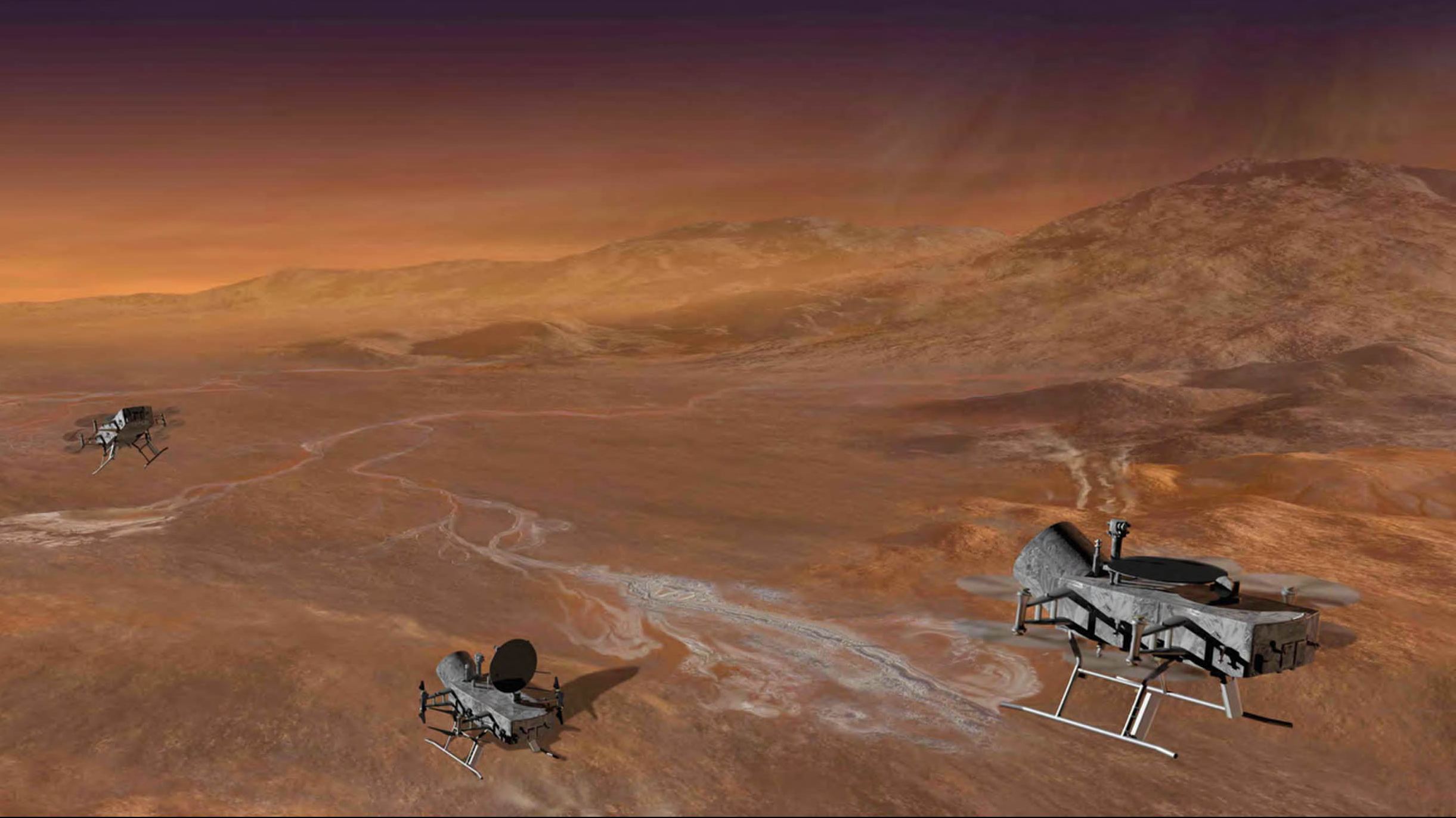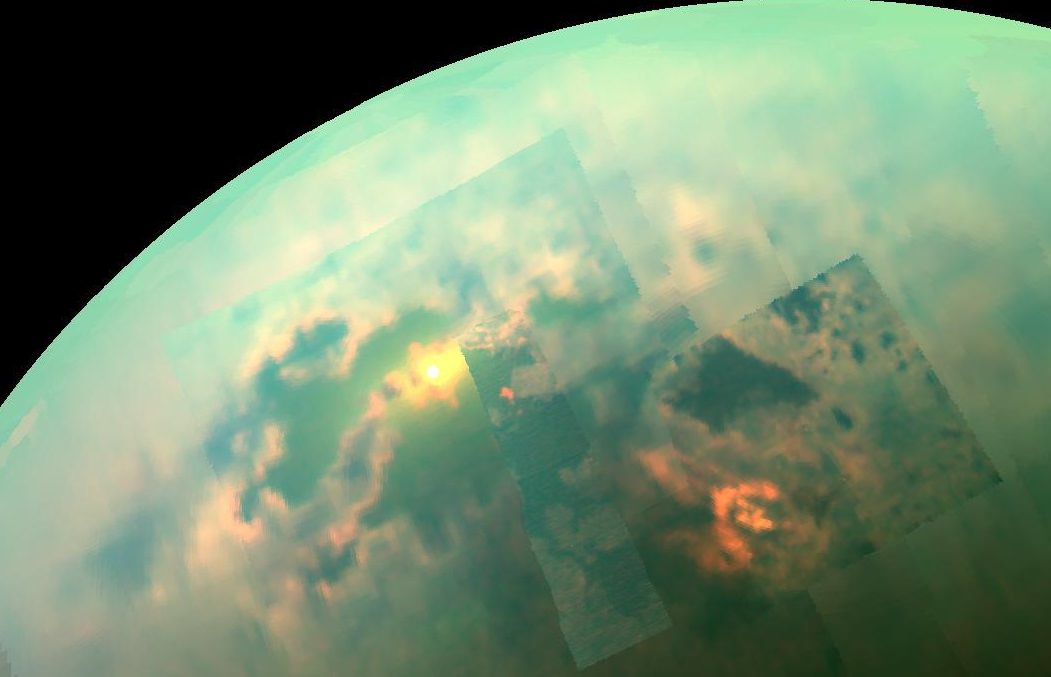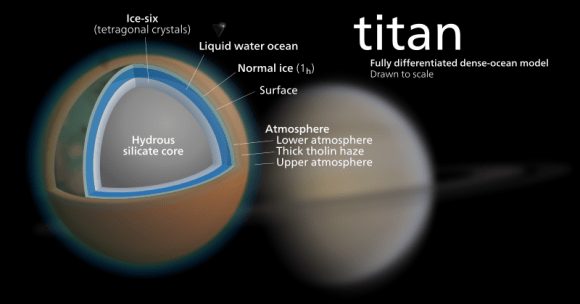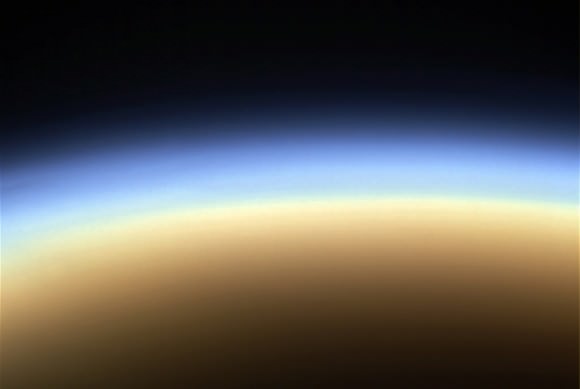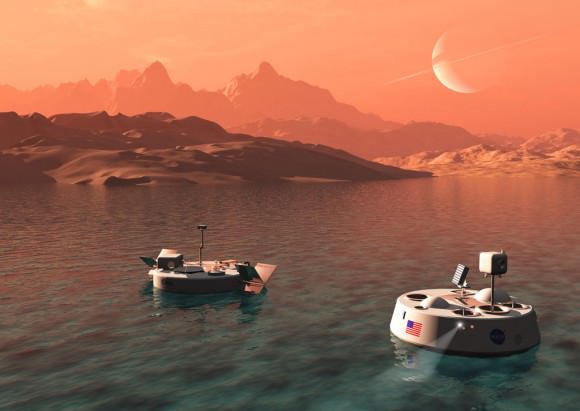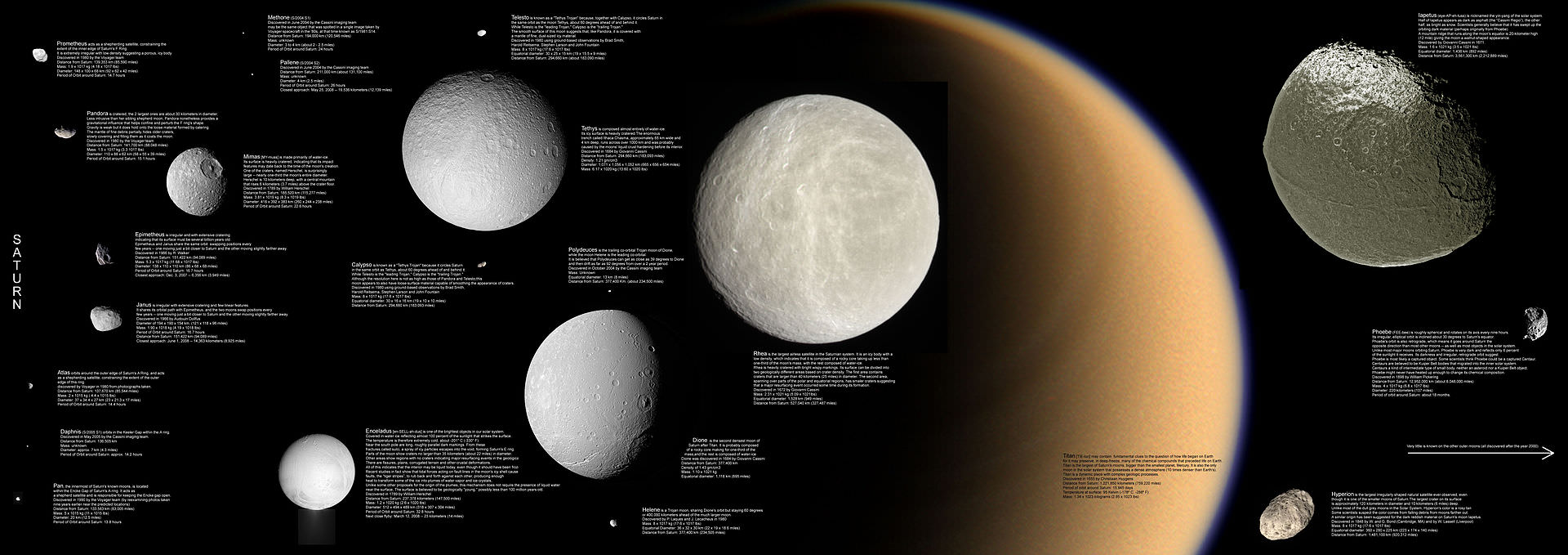In late 1970s and early 80s, scientists got their first detailed look at Saturn’s largest moon Titan. Thanks to the Pioneer 11 probe, which was then followed by the Voyager 1 and 2 missions, the people of Earth were treated to images and readings of this mysterious moon. What these revealed was a cold satellite that nevertheless had a dense, nitrogen-rich atmosphere.
Thanks to the Cassini-Huygens mission, which reached Titan in July of 2004 and will be ending its mission on September 15th, the mysteries of this moon have only deepened. Hence why NASA hopes to send more missions there in the near future, like the Dragonfly concept. This craft is the work of the John Hopkins University Applied Physics Laboratory (JHUAPL), which they just submitted an official proposal for.
Essentially, Dragonfly would be a New Frontiers-class mission that would use a dual-quadcopter setup to get around. This would enable vertical-takeoff and landing (VTOL), ensuring that the vehicle would be capable of exploring Titan’s atmosphere and conducting science on the surface. And of course, it would also investigate Titan’s methane lakes to see what kind of chemistry is taking place within them.

The goal of all this would be to shed light on Titan’s mysterious environment, which not only has a methane cycle similar to Earth’s own water cycle, but is rich in prebiotic and organic chemistry. In short, Titan is an “ocean world” of our Solar System – along with Jupiter’s moons Europa and Ganymede, and Saturn’s moon of Enceladus – that could contain all the ingredients necessary for life.
What’s more, previous studies have shown that the moon is covered in rich deposits of organic material that are undergoing chemical processes, ones that might be similar to those that took place on Earth billions of years ago. Because of this, scientists have come to view Titan as a sort of planetary laboratory, where the chemical reactions that may have led to life on Earth could be studied.
As Elizabeth Turtle, a planetary scientist at JHUAPL and the principal investigator for the Dragonfly mission, told Universe Today via email:
“Titan offers abundant complex organics on the surface of a water-ice-dominated ocean world, making it an ideal destination to study prebiotic chemistry and to document the habitability of an extraterrestrial environment. Because Titan’s atmosphere obscures the surface at many wavelengths, we have limited information about the materials that make up the surface and how they’re processed. By making detailed surface composition measurements in multiple locations, Dragonfly would reveal what the surface is made of and how far prebiotic chemistry has progressed in environments that provide known key ingredients for life, identifying the chemical building blocks available and processes at work to produce biologically relevant compounds.”
In addition, Dragonfly would also use remote-sensing observations to characterize the geology of landing sites. In addition to providing context for the samples, it would also allow for seismic studies to determine the structure of the Titan and the presence of subsurface activity. Last, but not least, Dragonfly would use meteorology sensors and remote-sensing instruments to gather information on the planet’s atmospheric and surface conditions.
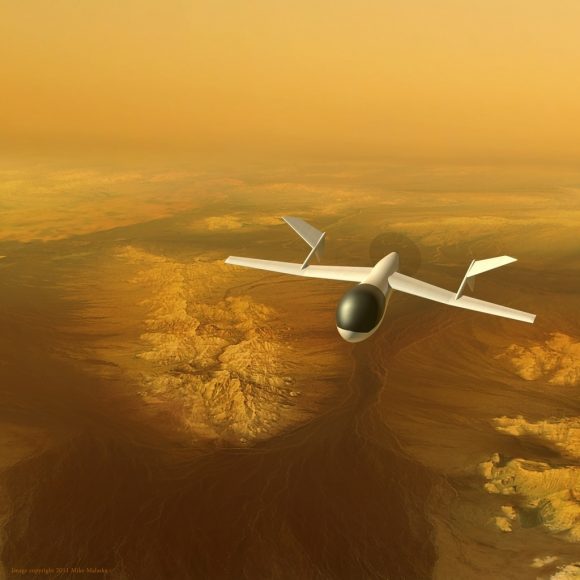
While multiple proposals have been made for a robotic explorer mission of Titan, most of these have taken the form of either an aerial platforms or a combination balloon and a lander. The Aerial Vehicle for In-situ and Airborne Titan Reconnaissance (AVIATR), a proposal made in the past by Jason Barnes and a team of researchers from the University of Idaho, is an example of the former.
In the latter category, you have concepts like the Titan Saturn System Mission (TSSM), a concept that was being jointly-developed by the European Space Agency (ESA) and NASA. An Outer Planets Flagship Mission concept, the design of the TSSM consisted of three elements – a NASA orbiter, an ESA-designed lander to explore Titan’s lakes, and an ESA-designed Montgolfiere balloon to explore its atmosphere.
What separates Dragonfly from these and other concepts is its ability to conduct aerial and ground-based studies with a single platform. As Dr. Turtle explained:
“Dragonfly would be an in situ mission to perform detailed measurements of Titan’s surface composition and conditions to understand the habitability of this unique organic-rich ocean world. We proposed a rotorcraft to take advantage of Titan’s dense, calm atmosphere and low gravity (which make flight easier on Titan than it is on Earth) to convey a capable suite of instruments from place to place — 10s to 100s of kilometers apart — to make measurements in different geologic settings. Unlike other aerial concepts that have been considered for Titan exploration (of which there have been several), Dragonfly would spend most of its time on the surface performing measurements, before flying to another site.”
Dragonfly‘s suite of instruments would include mass spectrometers to study the composition of the surface and atmosphere; gamma-ray spectrometers, which would measure the composition of the subsurface (i.e. looking for evidence of an interior ocean); meteorology and geophysics sensors, which would measure wind, atmospheric pressure, temperature and seismic activity; and a camera suite to snap pictures of the surface.
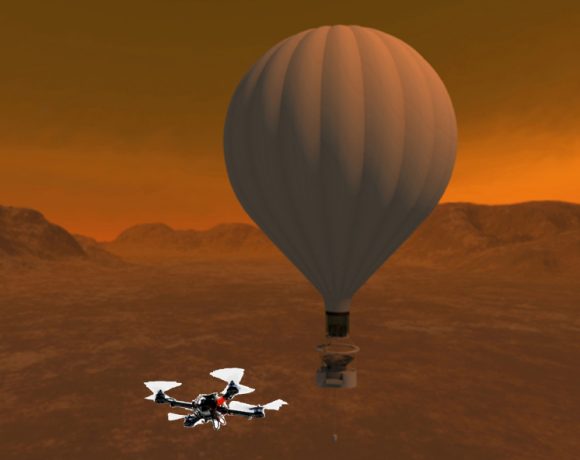
Given Titan’s dense atmosphere, solar cells would not be an effective option for a robotic mission. As such, the Dragonfly would rely on a Multi-Mission Radioisotope Thermoelectric Generator (MMRTG) for power, similar to what the Curiosity rover uses. While robotic missions that rely on nuclear power sources are not exactly cheap, they do enable missions that can last for years at a time and conduct invaluable research (as Curiosity has shown).
As Peter Bedini – the Program Manager at the JHUAPL Space Department and Dragonfly’s project manager – explained, this would allow for a long-term mission with significant returns:
“We could take a lander, put it on Titan, take these four measurements at one place, and significantly increase our understanding of Titan and similar moons. However, we can multiply the value of the mission if we add aerial mobility, which would enable us to access a variety of geologic settings, maximizing the science return and lowering mission risk by going over or around obstacles.”
In the end, a mission like Dragonfly would be able to investigate how far prebiotic chemistry has progressed on Titan. These types of experiments, where organic building blocks are combined and exposed to energy to see if life emerges, cannot be performed in a laboratory (mainly because of the timescales involved). As such, scientists hope to see how far things have progressed on Titan’s surface, where prebiotic conditions have existed for eons.
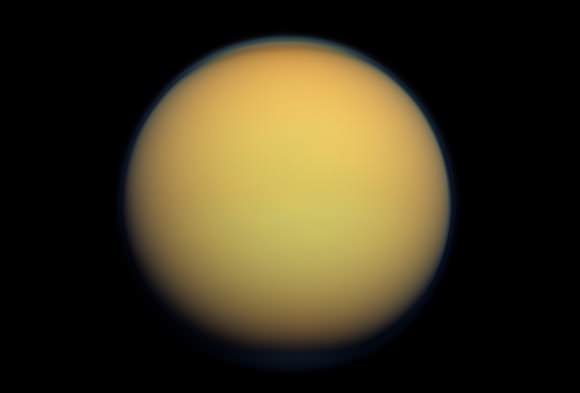
In addition, scientists will also be looking for chemical signatures that indicate the presence of water and/or hydrocarbon-based life. In the past, it has been speculated that life could exist within Titan’s interior, and that exotic methanogenic lifeforms could even exist on its surface. Finding evidence of such life would challenge our notions of where life can emerge, and greatly enhance the search for life within the Solar System and beyond.
As Dr. Turtle indicated, mission selection will be coming soon, and whether or not the Dragonfly mission will be sent to Titan should be decided in just a few years time:
“Later this fall, NASA will select a few of the proposed New Frontiers missions for further work in Phase A Concept Studies” she said. “Those studies would run for most of 2018, followed by another round of review. And the final selection of a flight mission would be in mid-2019… Missions proposed to this round of the New Frontiers Program would be scheduled to launch before the end of 2025.”
And be sure to check out this video of a possible Dragonfly mission, courtesy of the JHUAPL:
Further Reading: JHU Hub

